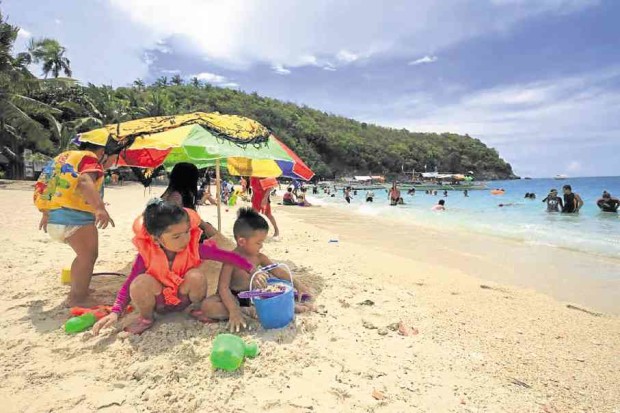Tourists urged to meet ‘Reina,’ ‘Pogi’
TAGAYTAY CITY—“Reina” and “Pogi” are not a festival pageant couple. They are the clusters of small-town communities, showcasing long lines of exquisite beaches in Quezon province.
“Reina” stands for the adjacent coastal towns of Real, Infanta and General Nakar. “Pogi,” on the other hand, refers to the Polillo Group of Islands composed of the towns of Polillo, Panukulan and Burdeos, the island town of Jomalig and the tourist-drawing Balesin Island (in Polillo).
At a tourism summit held here on Tuesday, tourism officials in Calabarzon (Cavite, Laguna, Batangas, Rizal, Quezon) region said they are focusing on off-the-beaten-track spots and little-known towns under the government’s tourism plan in the next six years.
In the Mimaropa (Mindoro, Marinduque, Romblon, Palawan) region, local officials are also pushing tourism through its second regional festival held Thursday in Puerto Princesa City. The celebration featured the festivals and major produce of each province, as it coincided with Palawan’s 5th Underground River Day.
“We have to diversify our tourism products [and spots] as we cannot just depend on one attraction anymore,” said Rebecca Labit, Department of Tourism (DOT) Calabarzon director.
Article continues after this advertisementThe DOT in Calabarzon recorded 21.7 million tourist arrivals for a day tour in 2015, placing the region closest to Metro Manila, on the top spot of destinations.
Article continues after this advertisementThere were 4.3 million tourists, mostly foreigners, who spent at least a night last year in the region. Most of them are Japanese, followed by Koreans, Americans, Chinese and Thais.
For Mimaropa, the DOT recorded 1.42 million tourists in 2015, most of them foreigners.
“But am I happy [about the figures]? No. Because they just eat [and leave],” Labit said. “We need to make tourists stay because that’s how we make revenues.”
The government’s tourism plan for both regions focuses its attention on developing ecotourism destinations and community-based tourism.
This means honing local talents and skills, and empowering the community to be the “vanguards” of their own natural wonders, Labit said.
An example, she said, is a community of Dumagat in Mauban town in Quezon.
Labit said they are packaging the community to become a “school of living traditions,” where tourists can see and experience “raw” and indigenous activities like cooking and weaving.
“Travelers will always be travelers. So when we ask them to come back, they will ask, ‘What’s new?’” Labit said.
With budget airfares and improved access, Labit said the challenge now lies not only on creating destinations but “creating the experience” for visitors.
“[Destinations and facilities] will practically look the same [for returning tourists), but developing the ability to create experience is another thing and it has something to do with (the local) people,” she said.
The DOT is also promoting the Laguna de Bae, composed of the towns of Angono in Rizal province and Calamba City, Los Baños and Bay in Laguna province.
